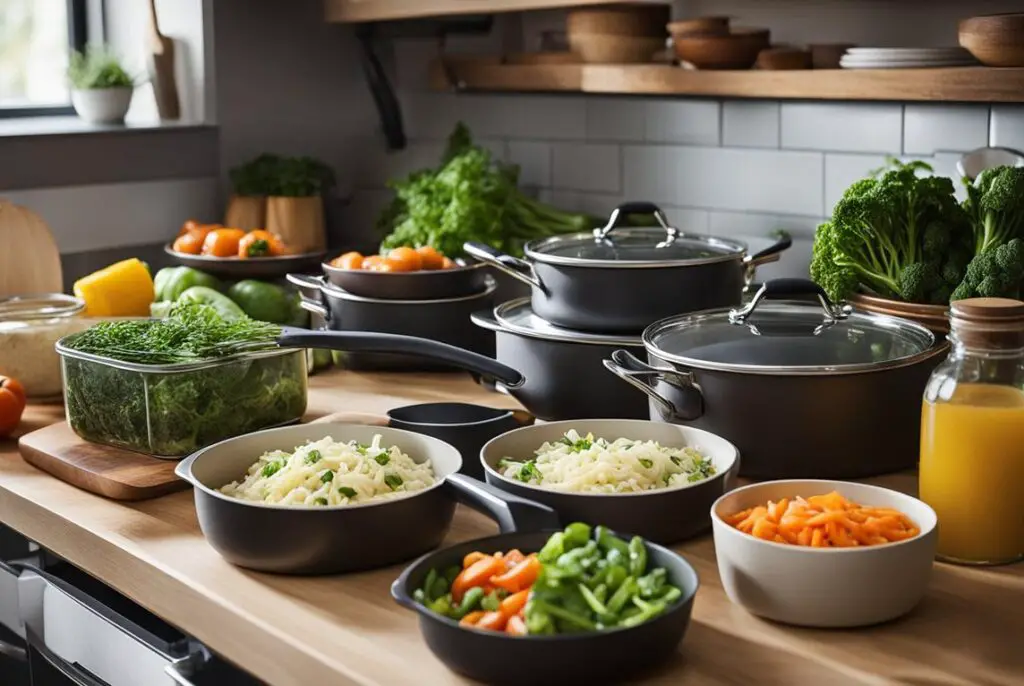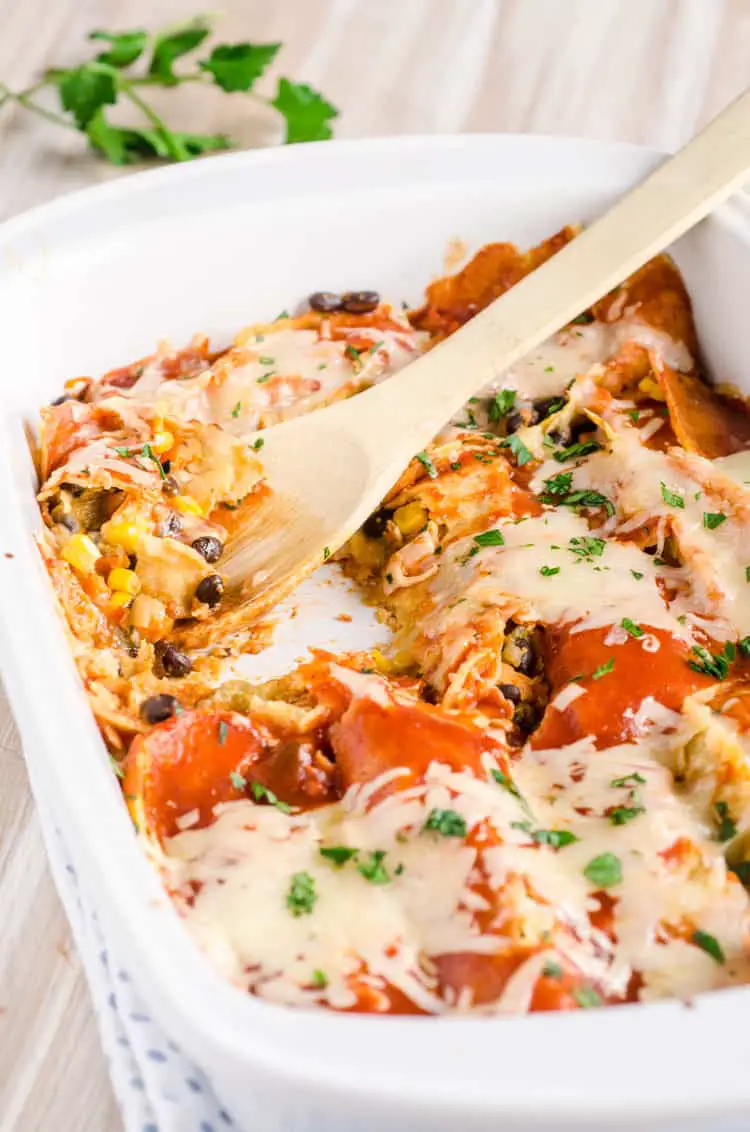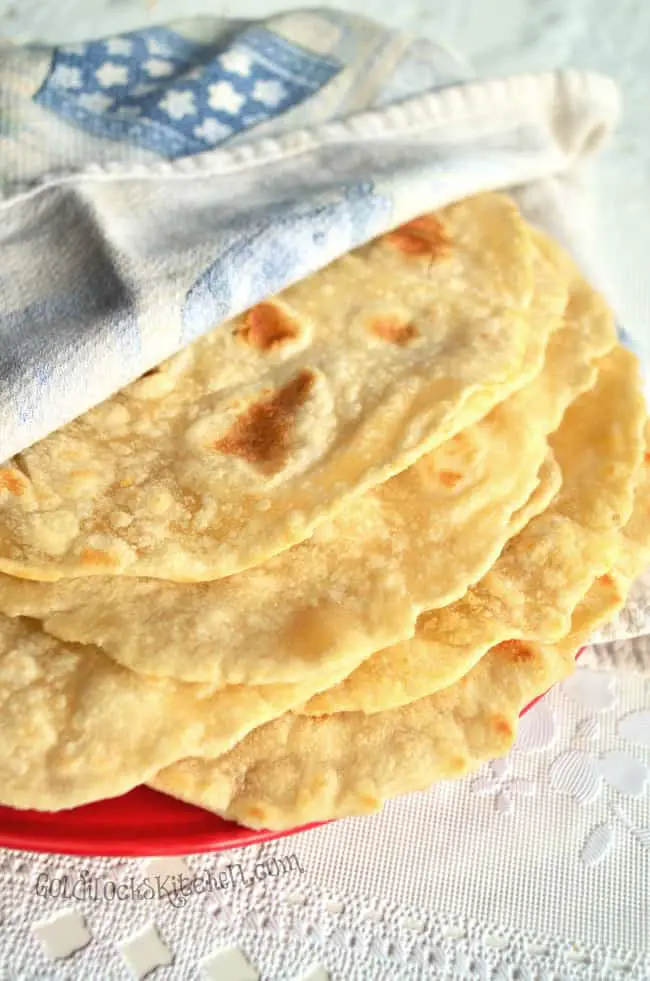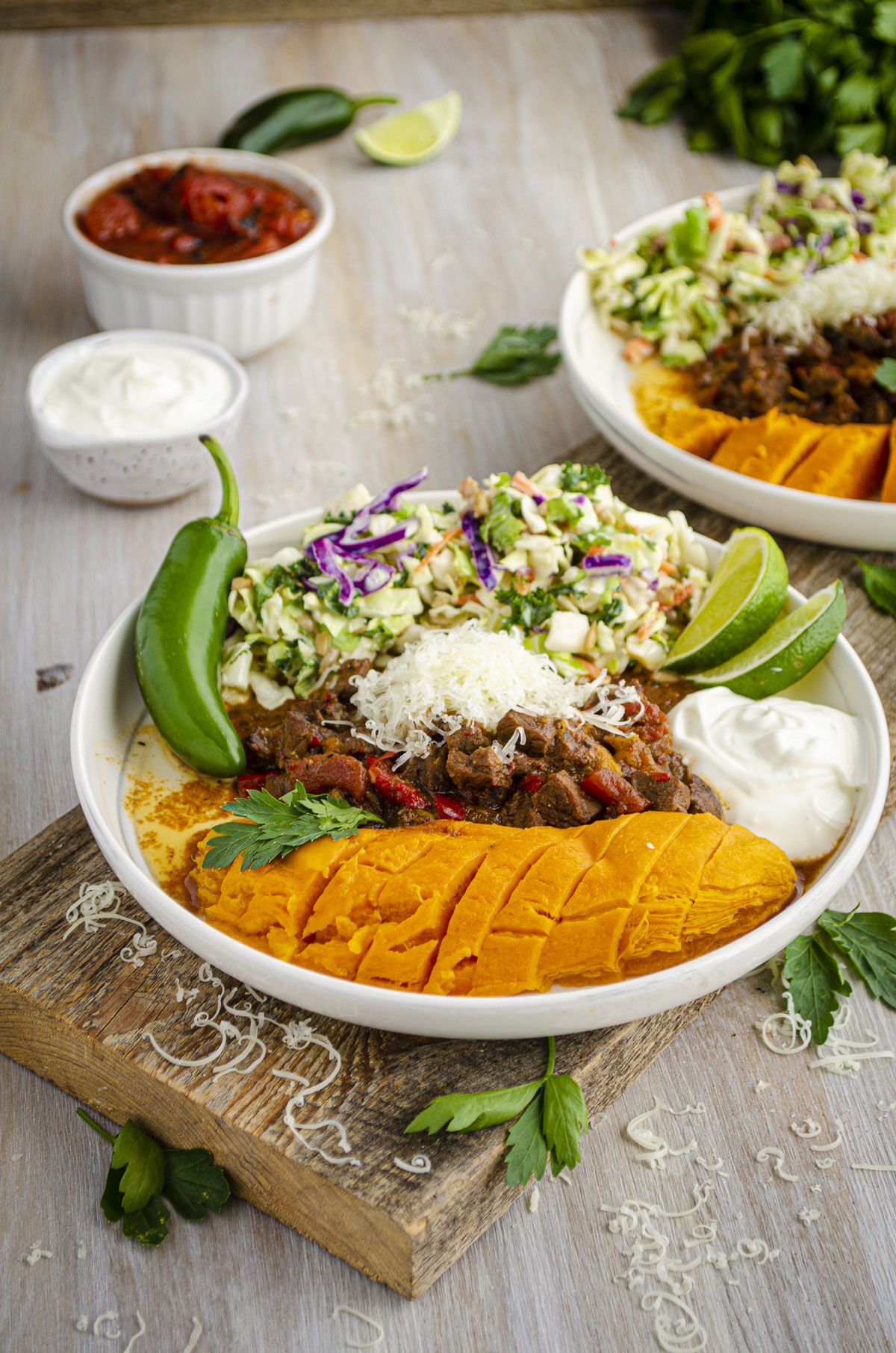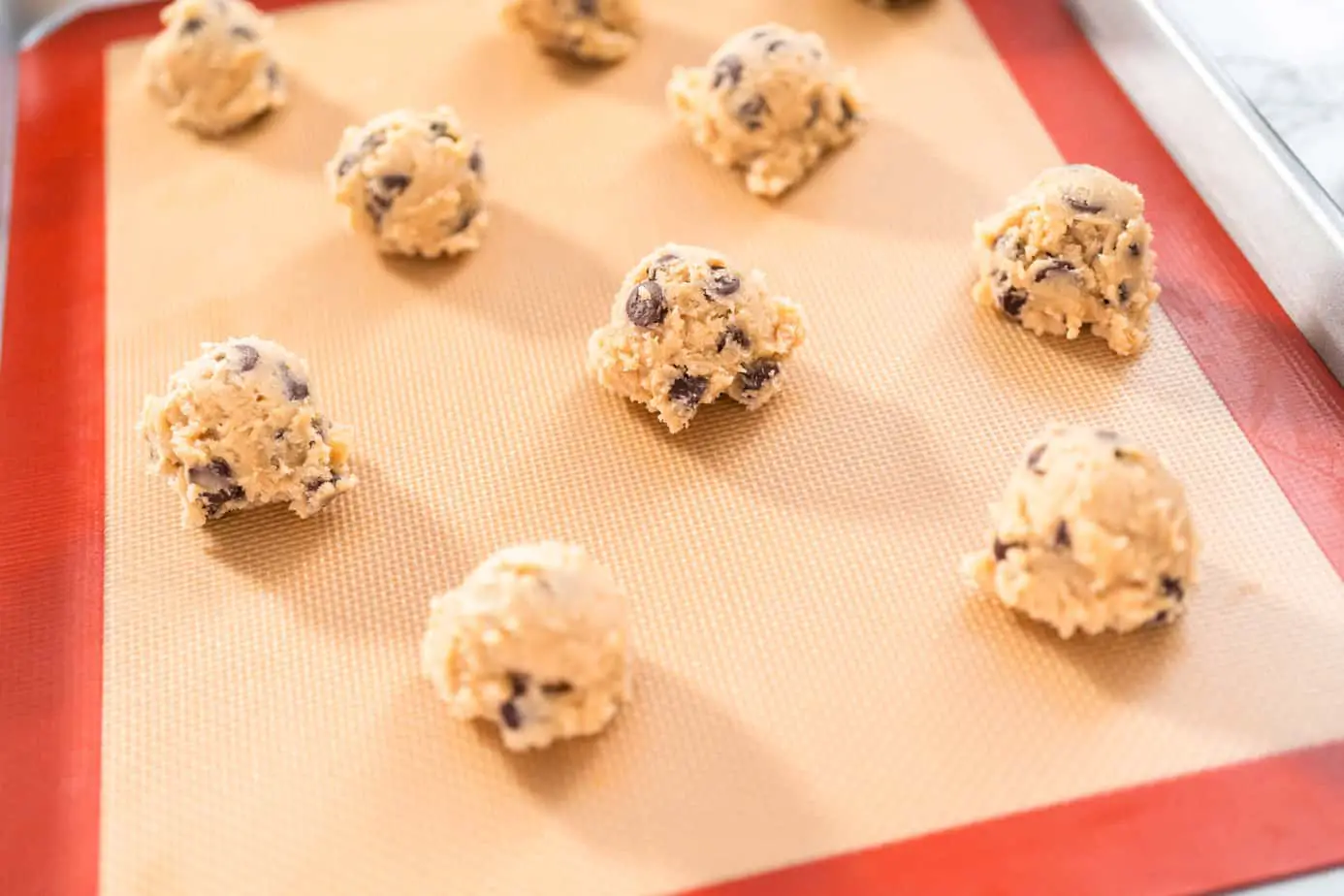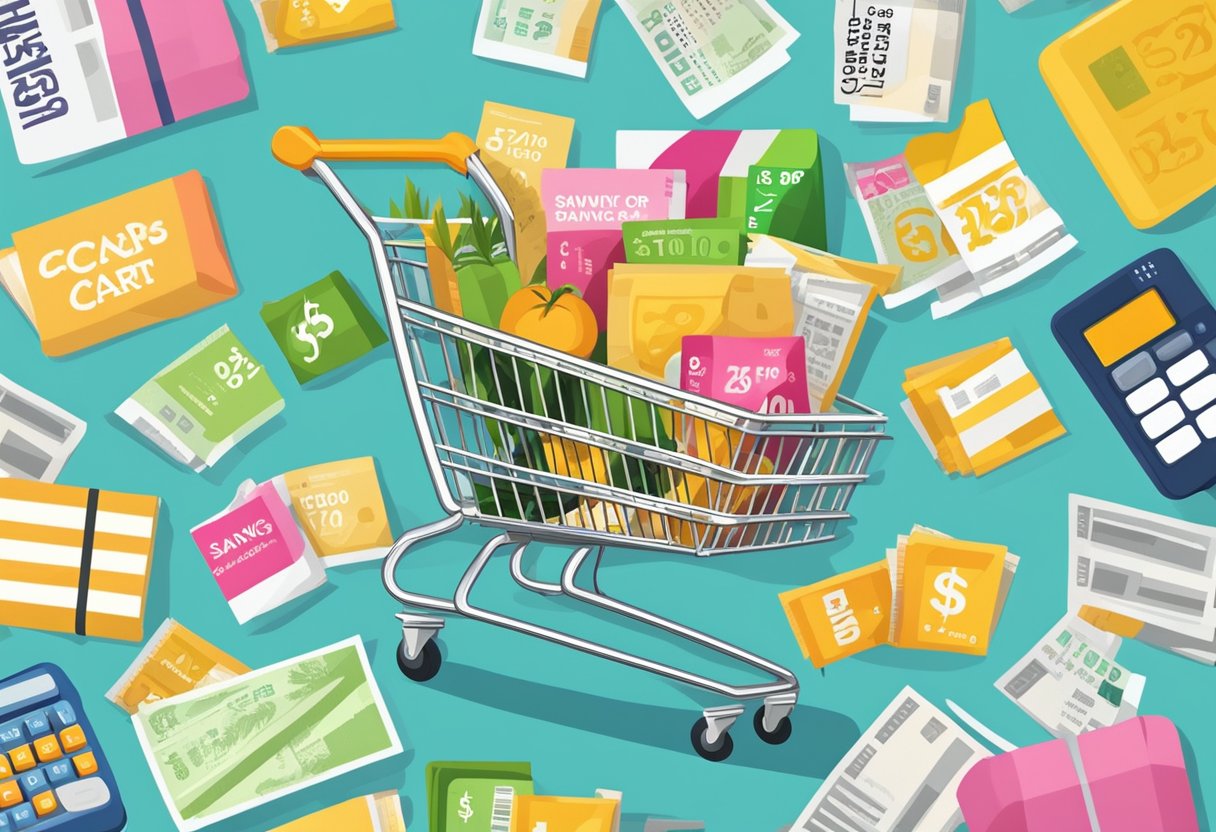Meal Prep Like a Pro: Batch Cooking Tips to Save Time and Money
Batch cooking (the practice of preparing large quantities of meals at once), is a super smart strategy for those looking to streamline their kitchen time and budget. Batch cooking does not mean you eat the same meals every day, rather it allows you to take advantage of bulk buying discounts and reduces the frequency of cooking from scratch, so you can have a variety of ready-to-eat meals at your fingertips!
By dedicating just a few hours one day to do most of your cooking for the whole week, you save time, stress, and money because you have cheap meals planned and ready to go, and you’re less tempted to purchase restaurant food, also saving you money.
Mastering the art of batch cooking involves taking the time to meal plan, a bit of savvy grocery shopping, and a few tools for food prep and storage. With a little organization and some clever hacks, you’ll find yourself making the most of your ingredients while reducing food waste.
If you have a strong desire to slash your food budget, you’ll need to shift the way you think about your meals. You’ll need to slash those on-the-fly fast food dinners (because there’s no time or energy to cook), and take the time to plan it out. I know this scares a lot of people off, but it’s really the best way to save money on food. And when you plan, you can batch cook to make life easier. Trust me, I know, and that’s why I’m about to share all my tips and tricks with you!
Key Takeaways
- Batch cooking is a great way to manage both time and finances in the kitchen.
- Meal planning and strategic shopping are essential for successful batch cooking.
- Efficient food prep and storage will streamline your batch-made meals.
Related Article: Save on Groceries Now by Embracing “Farm to Table”
The Basics of Batch Cooking
Okay, so we’ve just talked about how batch cooking is a smart strategy to make your week easier by preparing meals in advance, so where do you start? Working from the ground up, first we must start with equipment.
For instance, if you want to make a big batch of meat sauce, what are you going to cook it in? How long to store it in the fridge? How should I freeze it? Should I let it cool down first before placing it in the fridge? Here’s what I’ve learned:
Essential Equipment for Batch Cooking
Your kitchen should be equipped with a few key items to make batch cooking seamless:
- Instant Pot: This versatile kitchen gadget can dramatically cut down on cooking time. It acts as a pressure cooker, slow cooker, steamer, and more, all in one. Just about essential for cutting your prep time/ batch cooking in half. Use it to cook one recipe while you use your oven to cook another.
- Freezer-Safe Containers: To store your meals, you will need a selection of freezer-safe containers. I recommend glass with tight-fitting lids, silicone works great in the freezer, and lastly, I use boatloads of gallon-size freezer bags (zipper lock) that I rewash for repeated use to cut down on waste. (And I have a trick for labeling them as well, I’ll show you later.)
- Roasting Pans and Baking Sheets: Ideal not just for cooking large quantities of food, but for storage also. If you don’t already have lots of roasting pans, pick up several disposable aluminum foil roasting pans with lids. These are most excellent for freezer meals!
- Sharp Knives and Cutting Boards: Prepping your ingredients is more efficient when you have the proper tools to chop, dice, and slice. A sharp knife is actually safer than a dull one. Why? because A dull one is more likely to slip while you’re slicing and slice your finger instead.
- Food processor: Can I just strongly encourage a food processor here??? It’s not necessary, but once you get one you’ll wonder how you lived without it! Peeling and slicing an entire bag of carrots by hand will take about 15 minutes. A food processor will take you about 1 minute. Check out the food processor I’ve used over the last 8 years (and I LOVE it) and other recommended batch prep tools right here.
- Extra freezer space: Not necessary, but very helpful. We finally got a chest freezer last fall, and boy is it amazing for batch cooking! Before I was limited to the space in my refrigerator’s freezer, but now that limitation is gone. I know it’s a big expense; but if you find you really take to meal planning and bulk cooking, you’ll want to save up for one.
Remember, the key to successful batch cooking lies in the right equipment and a good plan. With the essentials on hand, you’ll be ready to prep and store your meals like a pro.
What Food is Good For Batch Cooking?
Once you have the right equipment, now it’s time to plan your meals and find those deals! (The order of these two can be flipped.) But what foods should you start batch cooking? From my own experience, and from talking with other budget-minded moms, the most common foods used for batch cooking are:
- Whole grains: Uncooked, they can be stored for months, even years, at room temperature, saving you space in your fridge. Rice, flour, pasta (wheat berries if you have a wheat grinder), and dry beans are great to purchase in bulk and are foundational foods that can be served with most meals.
- Proteins: Can be frozen raw or cooked for long-term storage. Eggs naturally store well for several weeks in the fridge. Search out the best price deals on protein at your go-to grocery stores, and stock up when it goes on sale. Savvy budget-meal planners will stretch meat into several meals by using a bit less than what the recipe calls for (like using 3/4 a pound of ground beef instead of 1 pound), and shredding pork or chicken to use in several recipes as well. Meat shouldn’t be the meal’s centerpiece if saving money is your goal.
- Vegetables: Buy in-season produce (which is typically more affordable), slice or chop it up, and freeze it for later. Check the prices of veggies already in the freezer aisle. Some store-brand bags of frozen veggies can actually be cheaper than buying fresh. *If purchasing fresh, slice or chop first then freeze in a single layer on a rimmed baking sheet. This way it won’t freeze stuck together.
- Canned goods: Stock up on things like canned beans, diced tomatoes, creams of whatever soup, and canned (or frozen) fruits when on sale. Some stores may even have a yearly ‘case lot’ sale where you can purchase an entire flat of cans at a discount.
A word of advice: don’t start by purchasing a ton of bulk food storage items, start with what you currently have and work your way up.
Creating a Budget-Friendly Shopping List
Plan before you shop. Before you go out and purchase these bulk items, first build a shopping list that aligns with your meal plan for the week. Budget-minded folks will take a pantry and freezer inventory FIRST to see what you already have that can be used. When stocking the pantry basics, ingredients that offer versatility and bulk-buying options are often cheaper, like pancake mix, peanut butter, and case lot sales of canned goods (hello diced tomatoes).
Next, Identify sales at local markets and stores; this knowledge is crucial for snagging deals. For instance, when chicken is discounted, consider it a good opportunity to stock up and freeze for multiple batch-cooked meals.
Some people are amazing at finding great deals when they shop- they then create their weekly or monthly meal plan around the items they purchased on sale. YouTubers such as MoneySavingMom and FitFrugalMom are superstars with this skill. I hope to one day be as good as they are!
I’ve found that learning what the typical prices are for common items is key to recognizing great deals. I’ve also found the easiest way to do this is to price compare with grocery store apps. Whatever store you’re in, pull up a competitor’s app and learn those prices!
Designing Meal Plans for Batch Cooking
Your meal plan should center around creating make-ahead meals that last the week (or longer!) and also align with your budget. A well-crafted meal plan ensures no ingredient goes to waste and can significantly lower your food expenses; make sure you double check each recipe to ensure you purchase enough of those bulk items to cover every meal. It really sucks to find out on Wednesday that you don’t have enough rice for the stir fry you’ve prepped for tomorrow’s dinner.
Here’s an example of budget friendly average American meal plan made with batch cooking:
Monday prep day: (or Sunday prep): You could prepare a large batch of chili using ground turkey, beans, and diced tomato. While you’re doing that, you load up and cook a batch of chicken in the instant pot to shred for recipes later in the week. Serve a portion of the chile fresh for dinner, then freeze some in meal-sized containers (for grab-and-go lunches at work), and portion enough out to serve later in the week over chili dogs, mac and cheese, or rice. Portion out some shredded chicken for taco night, and for chicken salad sandwiches. Freeze the rest to use for later.
Tuesday: Chicken tacos with some of the shredded chicken from yesterday. Divide the rest of the shredded chicken into a chicken salad (for sandwiches) or a chicken casserole (like chicken spaghetti), and place some to marinate in stir-fry sauce. Freeze the casserole for a future ez meal!
Wednesday: Serve leftover turkey chili on hot dogs or over rice (cook extra rice for tomorrow).
Thursday: Thaw a portion of chicken (in the morning if you can) and place it to marinate in some stir fry sauce or a little soy sauce. After work, saute some veggies and the chicken and serve over leftover rice from yesterday.
Friday: Why not have good old pancakes and eggs for dinner? Or some fish on Friday? Fish cooks fast and you can serve it with more leftover rice from Wednesday and steamed veggies (the same ones you used for stir fry).
Saturday: Leftover night; or treat yourself to a pizza, you deserve it by working hard all week eating homemade food! Yay!
Remember, keep the fridge and pantry stocked with staples like eggs, pancake mix, and oats for quick, budget-friendly meals to fill in the gaps. Remember, batch cooking doesn’t have to be drab; use spices and herbs to bring new life to repeated ingredients.
In case you’re feeling overwhelmed, I’ve got some budget meal plans already made for you right here!
Preparation Techniques and Cooking Hacks

Labeling your prepared food is vital to meal prep, especially when you live with a family of hungry grazers (husbands and teenagers I’m looking at you.) The key is to have an efficient system for labeling so it doesn’t go ‘missing’ into someone’s stomach before you want it to.
*Here’s a great tip for labeling washed zipper bags for reuse: dry-erase marker ink erases permanent marker ink on zipper-lock baggies! Just use a dry-erase marker to ‘write’ right over the permanent marker letters, then take a dry paper towel (or tissue) and wipe both inks right off! It’s like magic and enables you to reuse baggies time and time again which saves money and the environment :0)
Efficient Food Storage Solutions
Storing your batch-cooked meals effectively means you’ll have ready-to-eat options on hand, cutting down on last-minute cooking or dining out. Use clear, airtight containers or zip-top freezer bags to keep food fresh and prevent freezer burn. Label each container with the contents and date of cooking to keep track of what you have.
For freezer meals, write the name of what it is along with simple heating or cooking instructions on the label as well. This is vital! You think you’ll remember, but you won’t. Trust me. Also, if you’re freezing liquids or soups in zip-lock baggies, squeeze as much air out as you can before sealing to cut down on freezer burn.
- Soups and stews: Pour into portion-sized containers or fill freezer bags for easy thawing and reheating.
- Shredded chicken or ground beef: Store pre-measured in freezer bags or air-tight containers for quick use in recipes.
- Pulled pork: Package in meal-sized portions for sandwiches, tacos, or salads.
Preparing Versatile Base Ingredients
As mentioned above, focus on creating meals that use versatile base ingredients to form the foundation of multiple meals. For instance, a large batch of shredded chicken can be used in anything from tacos to soups. Cook a sizeable portion of ground beef to use in spaghetti sauce, enchiladas, or casseroles.
Here are specific tips for preparing such ingredients:
- Cook proteins like chicken or pork in bulk, then shred or chop before freezing. (The Instant Pot is amazingly good for this.)
- Cook ground beef and stir it into stews, chili, or sauces to freeze. It’s less likely to dry out or get freezer burn this way.
- Season these base proteins lightly with just salt and pepper; then add specific flavors during meal assembly.
- Employ your Instant Pot and/or slow cooker for hands-off cooking that doesn’t require you to stand by the stove, like cooking a large batch of rice for stir fry, beans and rice, soups or fried rice.
Vegetarian Batch Cooking
Vegetarian Batch Cooking can be just as time and money-saving as the meat eaters! Many vegetables freeze fantastically and so does tofu; don’t forget the versatility of rice! I have a whole list of freezable vegetarian-friendly ingredients below that are great for batching. Say hello to make-ahead meals like freezer stir fry, stuffed bell peppers and ready-made soups! Make a list of your favorite meals and organize them by similar base ingredients, then batch prep large quantities of the things you love to eat the most.
Unfortunately, most young leaf lettuces don’t freeze well; the exceptions are spinach, swiss chard, mustard greens, kale, and collards. But if you store them correctly, they can last for weeks. Creating a large batch of your favorite salad dressing can go a long way to save time and avoid the daily decision-making of what to eat.
Advantages of Vegetarian Prep
Cost-Effective: By planning your meals ahead, you buy ingredients in bulk and reduce food waste. Making large quantities at once means you benefit from economies of scale, sometimes getting a better deal on seasonal produce.
Health Benefits: Vegetarian diets are often high in fiber, vitamins, and antioxidants. Batch cooking lets you stay in control of what you’re eating, ensuring your meals and snacks are both healthy and stay within your dietary preferences. For more details on how to plan a successful vegetarian batch cooking session, be sure to check out these vegetarian batch cooking tips and recipes.
Convenience: Preparing your meals in advance allows you to have ready-to-eat nutritious meals on busy days, preventing the temptation of unhealthy fast food options.
Vegetarian Proteins Suitable for Freezing
Legumes: Beans, lentils, and chickpeas retain their texture and flavor well after freezing. They work perfectly in dishes like chilis, stews, or as a protein-packed salad topper.
Tofu: Pressed and cooked tofu can freeze well and is ideal for stir-fries or marinated dishes. When thawed, its texture becomes even more sponge-like, absorbing flavors beautifully.
Tempeh: This fermented soy product offers a hearty bite that stands up to freezing and is a great addition to grain bowls and vegan bolognese.
Seitan: Known for its meaty texture, seitan freezes and thaws without losing its chewiness, making it a great choice for sandwich fillings or sautéed dishes.
By incorporating these proteins into your vegetarian batch cooking, you ensure balanced meals that are high in protein and can be enjoyed throughout the week or month with little additional preparation. Remember to cool your dishes completely before freezing to maintain optimal taste and texture, and consider freezing techniques for the best results.
Making the Most of Freezer Meals
Unlock the full potential of your freezer by mastering the art of preparing and storing make-ahead meals. A well-executed freezer meal strategy can save you time and reduce food waste, ensuring you always have a homemade meal ready to go.
Freezing Techniques for Maximum Freshness
Individual Portions: To maximize freshness, freeze your meals in individual portions. Use airtight containers or freezer bags, making sure to label each with the date. This approach minimizes exposure to air and prevents freezer burn.
🌟 Tip: Flatten bags of food like soups or stews before freezing; they will stack easily and thaw quicker.
Thawing and Reheating Best Practices
Thaw Safely:
Always thaw your freezer meals in the refrigerator to ensure food safety. Plan ahead, as some items may require up to 24 hours. You can also use a microwave if it has a defrost setting for a quicker option.
Reheat Thoroughly:
It’s important to reheat your meals to an internal temperature of 165°F to ensure they are safe to eat. Use an oven, stovetop, or microwave for reheating. For evenly reheated meals, occasionally stir while heating.
Remember, your freezer is an ally in your quest for convenient, healthy dining. By following these techniques and practices, you can enjoy the fruits of batch cooking without compromising on food quality or safety.
Tips for Using Leftovers Efficiently
Making the most of your leftovers not only saves money but also reduces the amount of food waste. With the right strategies, you can repurpose your meals into new, delicious dishes like Leftover Turkey Stew, or Leftover Pulled Pork Green Chile Stew, that keep your menu fresh and exciting.
Creative Ideas for Repurposing Meals
Transform soups into sauces: If you have leftover soup, thicken it up with flour, cornstarch, or instant potato flakes and use it as a hearty sauce for pasta or rice.
Taco Tuesday on a Wednesday: Leftover meat from taco night can turn into delicious quesadillas for lunch or Instant Pot Pork Pozole for a simple dinner. Batch-cooking rice and meat can provide a great foundation for a million different meals, allowing you to adapt ingredients to make a range of worldwide cuisines easily throughout the week.
Leftover Strategies to Reduce Food Waste
- Plan meals with a purpose: Consider meals that grow with each day. Start with a roast, enjoy it with vegetables on day one, then shred the rest for sandwiches or salads for lunch and turn the rest of the meat and potatoes into a simple stew.
- Freeze in portions: Don’t let leftovers go bad. Freeze them in meal-sized portions to pull out for a last-minute dinner on busy nights. It has been so convenient for me to pull a small baggie from my freezer full of frozen leftover soup to take to work for lunch when I don’t have time to make a lunch. Learning how to save time and money with batch cooking might include insights on freezing and safe reheating practices.
Treat your leftovers like a resource for culinary creativity! Suppose you pair the tips above with a positive attitude and an organized grocery list. In that case, you’ll be turning yesterday’s dinner into today’s satisfying meal and find joy in being able to cut tons of money out of grocery spending!
Frequently Asked Questions
The bottom line is batch cooking can save you some serious money. But you may still have questions- no worries! Here are some FAQ’s to read over to ensure your batch cooking efforts are truly successful.
What are the cons of batch cooking?
Batch cooking does not mean you eat the same meals every day. It does mean you cook a few main bulk ingredients and then incorporate them into different meals throughout the week. This requires planning, a few hours of dedicated cooking time, and sticking to a schedule. If following a schedule or planning is difficult for you, batch cooking and meal prep may be challenging.
Do I need to let my food cool before placing it in the fridge/freezer?
Yes, this is a good idea- but be mindful that you should try to put it away within 1 hour of being cooked for food safety. Placing containers of hot food in the refrigerator or freezer makes the appliance work harder to maintain the temperature, using more energy.
What are some essential tips for freezer meal planning?
Proper labeling with dates and meal contents, along with using flattened storage bags for stacking can maximize space and organization in your freezer. Choose recipes that freeze and thaw well and try to keep a varied selection to avoid meal fatigue.
🌟 Tip: Do cream-based sauces freeze well? Find the answer right here.
How do dump meal plans work for batch cooking?
Dump meal plans involve prepping raw ingredients into bags or containers and then freezing them. When you’re ready to cook, you simply “dump” the contents into a slow cooker or pot, saving time on meal preparation days. You can double or triple a normal recipe, say for stir fry, and freeze it into single family-size portions.
What is the difference between batch cooking and meal prep?
Meal prep is simply planning and preparing your meals (or the ingredients) ahead of time. Batch cooking is a method that makes meal-prepping efficient! If you’re going to the trouble of cooking a meal, you might as well consider doubling or tripling the ingredients and saving portions for later so you only have to cook once and have three meals to eat instead of one.
What methods can be employed to reduce expenses when cooking in bulk?
To cut costs, choose recipes with overlapping ingredients, shop sales, and use seasonal produce. Consider using cheaper cuts of meat, which often work well in batch-cooked dishes that you can slow cook or cook in an Instant Pot, like stews and casseroles.
Is it cheaper to meal prep or buy food?
In the end, I hope you feel empowered with the tips and info shared here about batch cooking and how much it can help save you on your grocery bills, and that you give it a try! I’ve been doing it for the last year or so, and I know that it has enabled me to continue to serve good food to my family despite food prices being 30% higher on average than just 4 years ago.
If you need one more fact to persuade you to try batch cooking and meal planning, TopNutritionCoaching.com has posted a fascinating article about the differences in the price of eating out vs. eating in (at home). The data is displayed by state and ranked by cheapest and most expensive.
Americans save around $12 by opting to cook and eat at home, with the average home meal costing $4.23 versus over $16 per meal at an inexpensive restaurant.
Nicolette Star Maggiolo, RD, LDN from Top Nutrition Coaching

